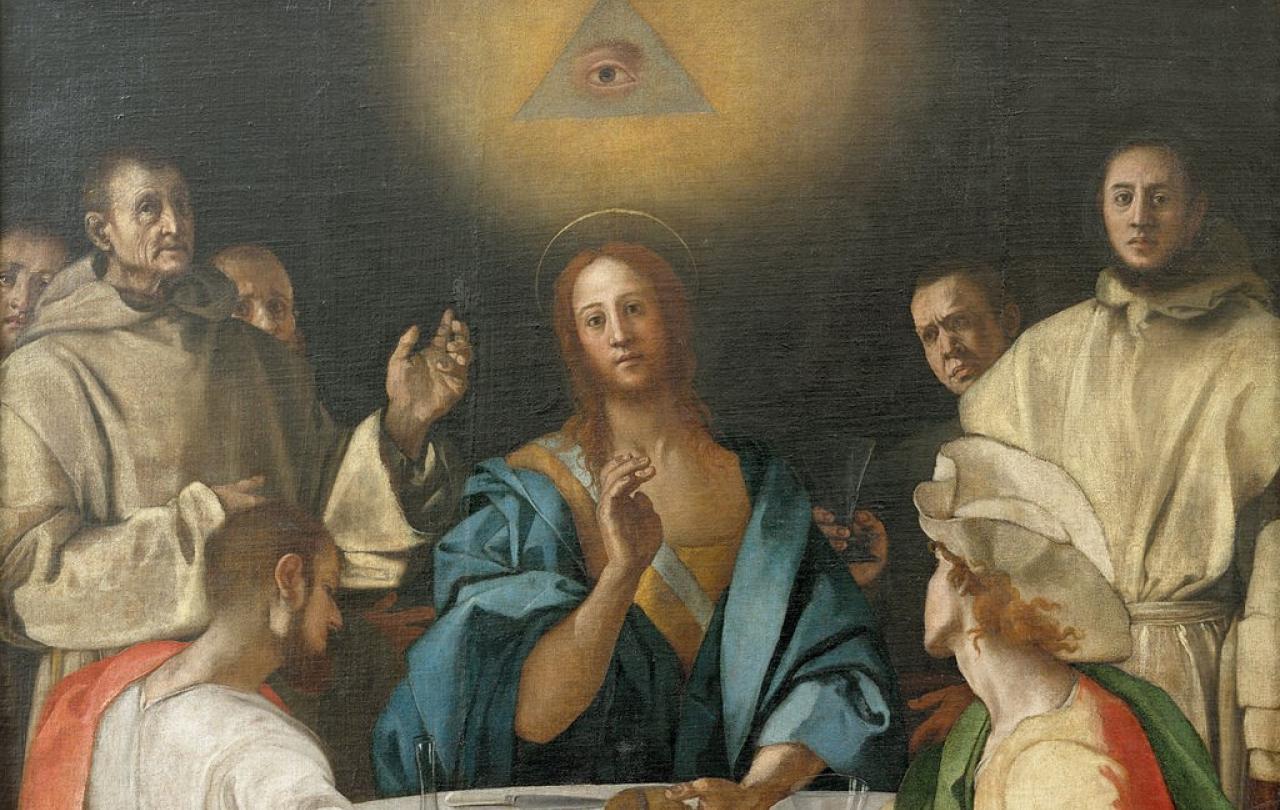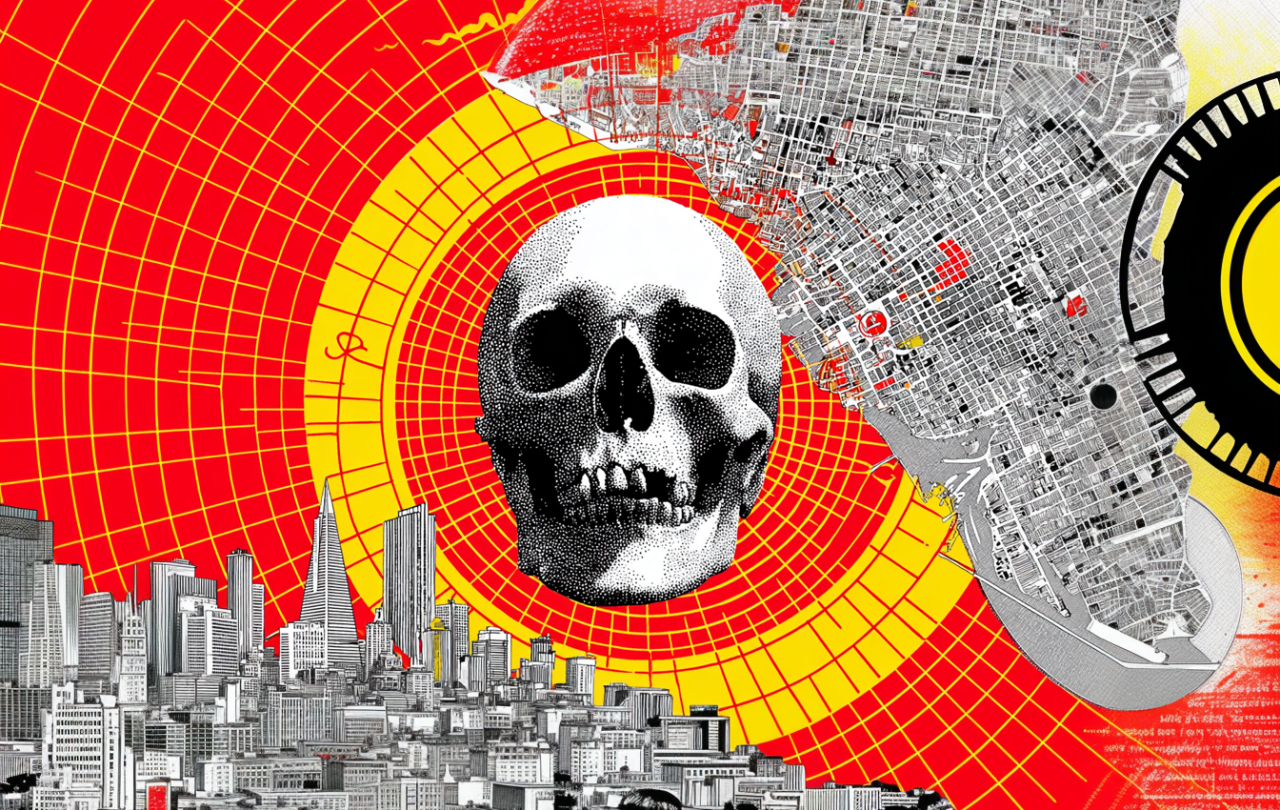
As December gives way to January, we become conscious of time rolling on from one year into the next.
The moment is often marked by that most famous image of the New Year: the Roman god Janus standing sentinel at the threshold; two-faced, gazing back into the past, but also forwards into the future.
The double-faced god is a striking symbol to depict this interface of time. But we also often find symbols at another important interface: the place where the Seen meets the Unseen.
Symbols have always existed at this touch-point - between the spiritual and the material. We might even say between heaven and earth. Symbols possess a power which goes beyond the strictly rational. They are more than their constituent parts.
In the moment when Jesus effectively instituted the church, he tells his disciple Peter: “Behold, I give you the keys to the kingdom of heaven, and whatever you bind on earth shall be bound in heaven, and whatever you loose on earth shall be loosed in heaven.” Here, Jesus not only uses symbolic language with his image of the key, he also assigns Peter (and so the church) a divinely-appointed role: to stand there at this threshold between the seen and the unseen, and to have an effect.
The mission then, to occupy and influence this frontier between both realms, is significant. It’s worth considering – especially at this liminal time of year - what a culture’s symbols say about its direction of travel. What are the symbols that saturate our conscious and unconscious world? What effect are they intended to have by their creators? What influence do they actually have in the seen and unseen?
Our culture is saturated with symbols that were always meant to exert influence in the unseen. Some consciously; other maybe less so.
The notion that symbols act on reality is not a merely Christian concept. Far from it. In many cultures, the origins of written communication have often been interwoven with both mystery and magic. The futhark, for example – the basis of the Old Norse runic alphabet in Scandinavia – developed directly out of shamanistic practices. In a word: witchcraft. Certain symbols were graven into material objects in order to have a specific effect. A rune for protection carved into the haft of a warrior’s axe; a rune for fertility on a woman’s comb or belt. Symbols to curse; symbols to bless. All intended to manipulate the reality around them. Effectively they acted as a kind of spell.
Roll the wheel of history forward a bit and we see the cross itself became a powerful symbol across the developing civilizations of the world, especially in Europe. Making the sign of the cross became synonymous with an invocation of God’s blessing or else protection against some evil. An outcome all the more extraordinary when one considers the origin of its use – a shameful incident of execution, standing on a lonely hill.
Similarly, the Crescent represents one of the great symbols of history, often in antagonism with the Cross. Think of the symbolic reversals still visible in the architecture of some parts of Spain. When the Iberian peninsula fell to Moorish conquest in the early eight century, the cross was torn down, all symbols of Christian faith effaced, only to return eight centuries later with the Reconquista. Today, you can see still the Cross surmounted on clearly Moorish architecture, a visible sign of those historic conflicts.
Such warring symbols of unseen spiritual realities are hardly consigned to the history books. Witness perhaps the most live example playing out all across the cities of Europe. The Star of David opposed and disdained by those waving black, green, red and white flags.
Nor is the clash of symbols simply a matter between the great religions of the world. The rainbow flag represents a certain positioning within the realm of the unseen wherever it is planted. In other contexts, our culture is saturated with symbols that were always meant to exert influence in the unseen. Some consciously; other maybe less so.
Apple’s ‘apple’ is not just an apple. It is an apple with a bite taken out of it. Elsewhere, symbolic representations of devil horns proliferate – to be expected on heavy metal t-shirts and album covers; perhaps less so throughout myriad children’s TV shows and movies across our streaming channels. Yet they are there.
The ‘One-Eye’ symbol has been associated variously with freemasonry, Luciferanism, Satanism and the occult. It appears in anything from pop videos to movie posters to political protest logos (“Just Stop Oil” anyone?). Even a ubiquitous pose-for-camera for celebrity photo-shoots. Once you clock it, you’d amazed how prevalent this symbol is across our culture.
Does it signify anything? Or nothing at all?
You have to assume that the creators of such symbols don’t include them by accident. Some are hidden in plain sight; others are brazen and bold. Either way, they are meant to be there. But why?
Symbols have always been used in the casting of spells. These days, we give so much head space to the consumption of culture, myriad symbols flashing in and out of our consciousness as we scroll ever onward, have we any idea what spells we are subjecting ourselves to – irrespective of whether we believe they are effective or not?
Against such murkiness, perhaps this season of Christmas rolling into the New Year is a good time to consider what some might consider the ultimate symbol appearing in our reality of the Seen: the Incarnation.
In a way, Christ identified himself as the visible interface between the seen and the unseen when he said: Whoever has seen me has seen the Father.
And yet, the Incarnation also transcends the mere symbolic. Yes, Christ points to an unseen reality, but he is also the ‘thing’ itself. He is both Seen and Unseen in one. Not a symbol pointing to something else, but the thing to which all symbols ultimately point: the central reality in the universe where God and creation meet.
Join with us - Behind the Seen
Seen & Unseen is free for everyone and is made possible through the generosity of our amazing community of supporters.
If you’re enjoying Seen & Unseen, would you consider making a gift towards our work?
Alongside other benefits (book discounts etc.), you’ll receive an extra fortnightly email from me sharing what I’m reading and my reflections on the ideas that are shaping our times.
Graham Tomlin
Editor-in-Chief





